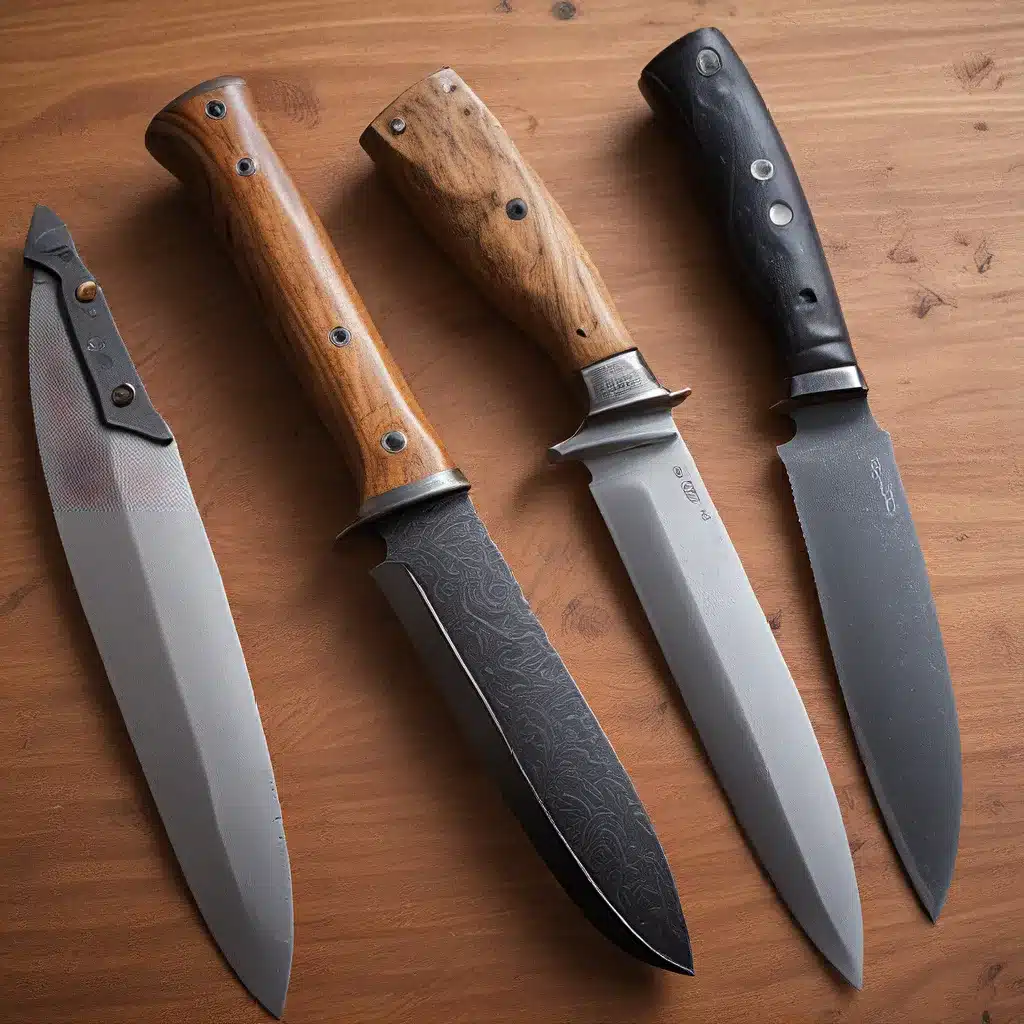
From the Stone Age to the Digital Age: Tracing the Journey of Knives
Ah, the humble knife – a tool that has been with us since the dawn of human civilization. As I sit here, twirling a well-worn blade between my fingers, I can’t help but wonder about the fascinating story behind these everyday essentials. After all, the evolution of knives is a tale that stretches back thousands of years, weaving together the threads of human ingenuity, technological advancements, and the ever-changing needs of our species.
Let’s start at the very beginning, shall we? In the ancient Stone Age, our ancestors were crafting their first knives out of materials like flint, bone, and even sharpened stones. These primitive tools were essential for tasks like hunting, butchering, and even basic food preparation. Imagine the skill and patience required to painstakingly shape and sharpen these early blades – a far cry from the sleek, efficient knives we use today.
As civilizations progressed, the art of knife-making evolved alongside them. The Bronze Age saw the emergence of metal blades, which were stronger, more durable, and could hold a sharper edge. These early metalworkers were true pioneers, experimenting with different alloys and techniques to create knives that were not only functional but also works of art.
Ancient texts and archaeological finds reveal that the sharpening of these early blades was a complex and often ritualistic process. Some cultures even believed that the act of sharpening a knife was imbued with spiritual significance, requiring a steady hand and a deep respect for the tool.
The Rise of the Specialized Knife
As time marched on, the role of the knife began to diversify and specialize. In the Middle Ages, we saw the emergence of the iconic European sword and dagger, which were not only instruments of war but also symbols of power and status. Meanwhile, in the East, the Japanese were refining the art of knife-making, producing the legendary samurai swords that are still revered today.
But it wasn’t just the military that was driving the evolution of knives. In the culinary world, the need for precision and efficiency in the kitchen led to the development of specialized blades for tasks like slicing, chopping, and mincing. The rise of the professional chef in the 19th and 20th centuries further fueled this trend, as they demanded tools that could keep up with their demanding workflows.
Legendary knife manufacturers like Konosuke emerged, catering to the exacting needs of these culinary masters. Their blades were not just functional, but also works of art, featuring intricate patterns and designs that reflected the rich cultural heritage of their origins.
The Modern Knife Landscape
Today, the world of knives is more diverse and complex than ever before. With the advent of modern materials and manufacturing techniques, we’ve seen the emergence of a dizzying array of blade styles, from the razor-sharp Japanese santoku to the rugged outdoor survival knives.
But as the landscape has evolved, so too have the methods of sharpening and maintaining these tools. Traditional whetstone sharpening has given way to a plethora of innovative solutions, from the HORL2 tumbler knife sharpener to the sleek electric sharpeners that can bring even the most dull blade back to life.
And as I mentioned earlier, I’m always on the lookout for new ways to keep my knives in tip-top shape. That’s why I was intrigued when I stumbled upon the Herman Knives website – a veritable treasure trove of information and resources for the modern knife enthusiast. From tutorials on proper sharpening techniques to in-depth reviews of the latest and greatest blade innovations, this site has quickly become an indispensable resource in my quest for the perfect edge.
The Future of Knives: Blending Tradition and Innovation
As I ponder the future of knives, I can’t help but feel a sense of excitement and wonder. What new materials and technologies will emerge to push the boundaries of blade design? Will we see the rise of AI-assisted sharpening systems, or perhaps even self-sharpening knives that never need manual attention?
The possibilities are truly endless, and I can’t wait to see where the journey of the humble knife takes us next. One thing is for certain, though: no matter how advanced the technology may become, there will always be a place for the timeless art of hand-sharpening, where the rhythmic scrape of steel on stone becomes a meditative dance, a connection to the artisans of the past.
So, as I slip my trusty blade back into its sheath, I can’t help but feel a sense of reverence for the countless generations of craftspeople who have shaped and honed these tools, each one leaving their mark on the ever-evolving story of the knife. It’s a legacy that I’m proud to be a part of, and one that I’ll continue to explore and celebrate for years to come.


